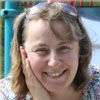Fiona Salvesen Murrell is studying William Shiels, R.S.A. (1783-1857); identity, scientific enquiry, and the development of art institutions in Britain and North America. In three parts she tells us about the work of William Shiels and the collection held at National Museums Scotland. In part 1 Fiona looks at how she came to start researching William Shiels. In part 2 find out about the artist and his work and in part 3 discover the surviving works. Visit National Museum of Rural Life, East Kilbride to see some of Shiels’s paintings for yourself.
The artist
William Shiels is an intriguing figure. Having trained initially in Edinburgh and then London, he worked in both cities and his home region of around Kelso for most of the rest of his life. However he made a radical change by emigrating to the United States in 1817, where he remained until c.1825. In 1821 he co-founded and directed the South Carolina Academy of Fine Arts in Charleston, South Carolina. On his return he was founder member the Royal Scottish Academy (1826 onwards).
In 1832 David Low [1] commissioned Shiels to begin painting a series of livestock portraits for the Agricultural Museum he was founding within the University. The commission eventually encompassed just over 100 paintings and the last ones were completed in 1844.
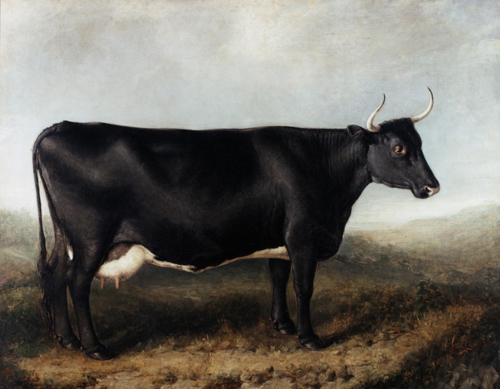
So many animal portraits
What is exceptional about the commission is that the paintings were all made on a scale of life-size for the sheep, pigs, goats, and dogs, and half life-size for the horses and cattle, all depicted with scientific accuracy. This was highly unusual, especially when one considers just how many portraits ended up being painted – which was at least one hundred. Shiels was paid between £10.50 and £30 per portrait depending on how many animals were portrayed – the West Highland Ponies, below, for instance, cost £30.
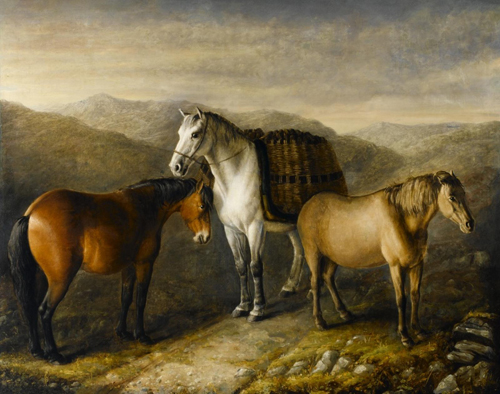
He was paid partly from a Treasury grant that Low obtained for the Museum of Agriculture, partly out of the Reid Fund from the University, but mostly by Low directly out of his own private income.
The paintings record many breeds which have since changed, or even become extinct. Low advocated retaining the diversity of the different breeds because he believed (correctly) that qualities such as hardiness could be lost by the trend in crossing different animals and breeds that was very prevalent in the late eighteenth and early nineteenth centuries. Shortly after the paintings were made advances in photography made this type of portraiture unnecessary; however that only increases the historical importance of these works.
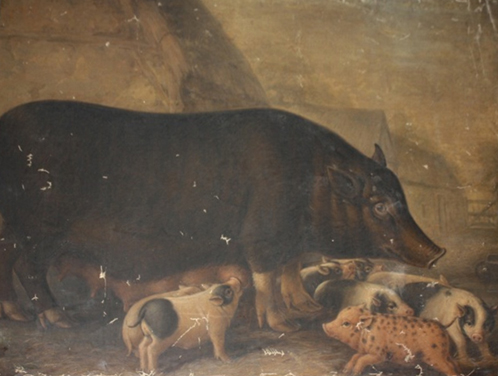
Painting method used by Shiels
Each portrait was painted directly from life and thus far none of Shiels’ sketches have come to light. Shiels described setting up his canvas and oil paints wherever he found the animal – be that on the Outer Hebrides, Shetland, the Channel Islands, the Welsh mountains, Norfolk, or even in London Zoo. He then made a detailed portrait of the animal(s) and sketched the landscape which was completed later – sometimes within Low’s classroom at the University.
Earlier writers had thought that Low had instructed Shiels which animals to depict – but it is now apparent that Shiels was an expert judge of livestock, having had an agricultural background from birth in the Scottish Borders, and selected several, if not most of the subjects to paint.
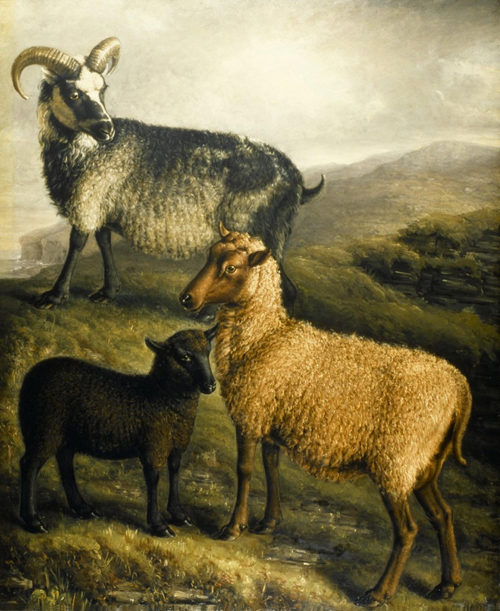
[1] David Low (17 86-1859) Professor of Agriculture at the University of Edinburgh
